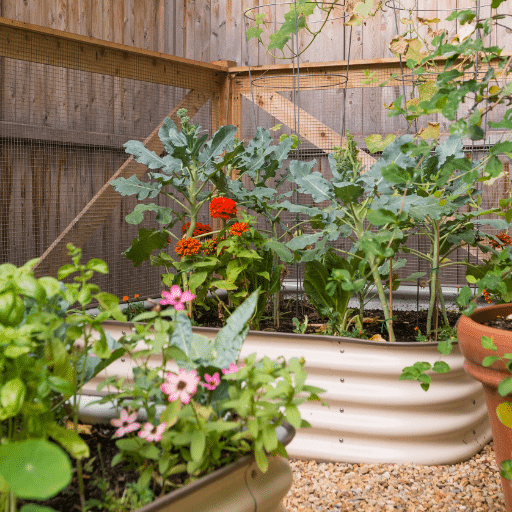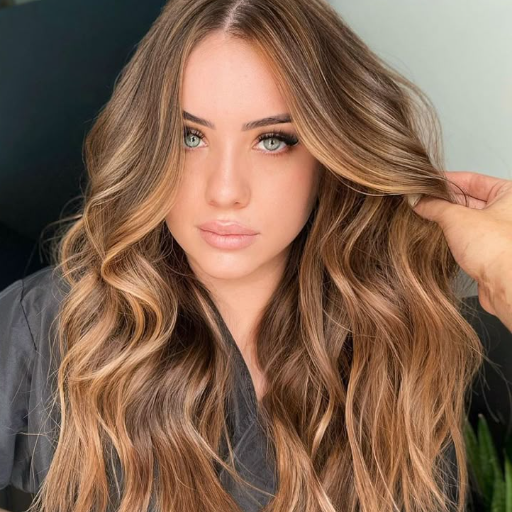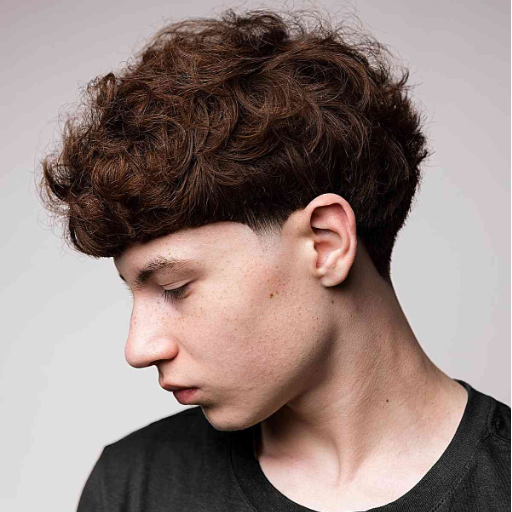Container gardening is a truly changeable and fulfilling way to cultivate your own food in places that are small in dimension. The garden of edible flowers in pots brings a very colorful splash to the home or patio, along with nice sharp blossoms to flavor dishes and drinks. This comprehensive guide will explore the world of container gardening, with an emphasis on edible flowers, helping you transform any space into a beautiful and functional garden.
Introduction to Edible Flower Gardens

Edible flower gardens provide an unconventional freedom to blend beauty and flavor in your culinary and garden experience. By picking flower varieties wisely—nasturtiums, pansies, or calendulas—you can have a container garden that thrives in tight spaces while providing beautiful, tasty blossoms.
Key Success Factors:
- Choosing well-draining pots
- Using nutrient-rich soil
- Providing ample sunlight
- Maintaining proper watering schedule
These delicate colors can garnish salads, infuse syrups, or grace desserts, elevating basic dishes in terms of both appearance and taste. With minimal maintenance, you can enjoy a garden that is both enthralling and functional.
What are Edible Flowers?
Edible flowers are flowers that you can safely eat and are usually added to dishes for flavor, color, and whimsical garnishes. Some of the most common edible flowers include nasturtiums, pansies, marigolds, and chamomile, each imparting different tastes that may range from peppery to sweet.
Important Safety Note: Always ensure flowers are organically grown (without pesticides) and are labeled safe for consumption before adding them to your recipes.
Benefits of Growing an Edible Flower Garden
Growing an edible flower garden offers numerous advantages:
- Visual Appeal: Beautifies your space with vibrant colors
- Fresh Ingredients: Provides organic supply of unique flavors and nutrients
- Chemical-Free: Ensures flowers are safe from harmful pesticides
- Creative Satisfaction: Offers a rewarding connection with nature
- Culinary Enhancement: Transforms basic meals into remarkable creations
- Cost-Effective: Reduces expenses on specialty ingredients
Choosing the Right Pot and Planter
Selecting the appropriate container is crucial for your edible flower garden’s success:
Essential Requirements:
- Drainage: Ensure sufficient holes to prevent waterlogging
- Material: Choose non-toxic options like clay or ceramic
- Size: Provide adequate space for root growth
- Aesthetics: Select planters that complement your garden’s overall look
Popular Edible Flowers for Container Gardens

| Flower Type | Flavor Profile | Best Uses | Growing Difficulty |
|---|---|---|---|
| Nasturtiums | Peppery, spicy | Salads, sandwiches, pasta | Easy |
| Pansies | Mild, slightly sweet | Cake decoration, garnishing | Easy |
| Violas | Mild, sweet | Desserts, beverages | Easy |
| Marigolds | Citrusy, slightly bitter | Savory dishes, teas | Easy |
| Borage | Cucumber-like | Salads, drinks | Moderate |
| Calendula | Mild, slightly peppery | Salads, teas, medicinal uses | Easy |
Featured Edible Flowers
Nasturtium: A Colorful Addition
One of the most versatile and stunning flowers for an edible garden, nasturtiums bear intense orange, red, and yellow blooms. Their peppery flavor complements salads, sandwiches, and pasta dishes with a distinctive taste. Both leaves and flowers are edible, offering similar zesty flavors.
Nasturtium Benefits:
- Easy to grow with minimal maintenance
- Natural pest repellent properties
- Thrives in well-draining soil with full sun
- Excellent companion plant
Borage: Beauty and Benefits
Borage features spectacular star-shaped blue flowers that attract pollinators like bees, maintaining a thriving garden ecosystem. The edible flowers and leaves provide a mild cucumber aroma, perfect for salads and drinks.
Calendula: Healing Flowers
Calendula produces bright orange and yellow blooms known for their anti-inflammatory, antiseptic, and skin-soothing qualities. These flowers are excellent for making salves and teas while attracting beneficial pollinators to your garden.
Creating Your Edible Flower Garden

Step-by-Step Setup:
- Select Safe Varieties: Choose flowers suitable for your climate
- Choose Location: Find a sunny spot with good drainage
- Prepare Containers: Ensure proper drainage holes
- Add Quality Soil: Use nutrient-rich, well-draining potting mix
- Plant Strategically: Consider companion planting principles
- Establish Care Routine: Regular watering and maintenance
Soil and Fertilizer Requirements
Optimal Soil Conditions:
- pH Level: Slightly acidic to neutral (6.0-7.0)
- Texture: Well-draining loam soil preferred
- Nutrients: Rich in organic matter
- Drainage: Retains moisture while preventing waterlogging
Fertilizer Options:
- Organic Choice: Compost or well-rotted manure
- Synthetic Option: Balanced fertilizer (10-10-10) used cautiously
- Testing: Regular soil testing for optimal composition
Maintenance and Care

Watering and Sunlight Requirements
| Care Aspect | Requirements | Best Practices |
|---|---|---|
| Watering | Regular, even moisture | Water in early morning; avoid overwatering |
| Sunlight | 6+ hours direct sunlight | Provide filtered light during hottest periods |
| Pruning | Remove dead blooms | Encourage continuous blooming |
| Fertilizing | Balanced organic fertilizer | Apply according to package instructions |
Pest Management in Container Gardens
Effective pest control begins with prevention and regular monitoring:
- Regular Inspection: Check for holes, discoloration, or insects
- Natural Predators: Release beneficial insects like ladybugs
- Gentle Solutions: Use water and mild soap spray for minor infestations
- Clean Environment: Remove debris to eliminate pest shelter
- Companion Planting: Use herbs that naturally repel pests
Harvesting Your Edible Flowers
Optimal Harvesting Conditions:
- Timing: Early morning when flowers are crisp
- Selection: Choose fully open, bright blooms
- Tools: Use clean scissors or garden shears
- Cleaning: Rinse in cool water and dry gently
Enhancing Your Culinary Experience

Using Edible Flowers in Cooking
Safety Guidelines:
- Source flowers from trusted, pesticide-free suppliers
- Never use roadside or treated flowers
- Research each flower’s edibility and flavor profile
- Start with small amounts to test flavor impact
Culinary Applications:
- Fresh Uses: Salad garnishes, drink decorations
- Preserved Forms: Candied petals, floral syrups
- Frozen Elements: Ice cubes with embedded flowers
- Baked Goods: Cake decorations, infused desserts
Storage and Preparation Tips
- Store between damp paper towels in airtight containers
- Keep refrigerated until ready to use
- Use “less is more” approach for delicate flavors
- Always wash thoroughly before consumption
References
-
Food Garden Life: This source provides insights into edible flowers suitable for container gardening, including tips on their use and care. Visit the source1.
-
Martha Stewart: A detailed guide on nine edible flowers that thrive in pots and containers, such as Nasturtiums, Lavender, and Pansies. Visit the source2.
-
Reddit – Container Gardening: A community discussion on the easiest edible flowers, herbs, and foods to grow in containers, offering practical advice for beginners. Visit the source3.
Frequently Asked Questions (FAQ)
What are the best edible flowers for container gardens?
When considering edible flowers for your container garden, nasturtium, pansy, and marigold are excellent choices. These flowers not only enhance the visual appeal of your garden but also offer unique flavors. Nasturtiums have a peppery taste, making them a great addition to salads, while pansies provide a subtly sweet flavor. Marigolds, with their bright orange and yellow blooms, can also add color and flavor to your dishes. Additionally, these flowers are easy-to-grow and attract pollinators like bees and butterflies, enhancing your garden’s ecosystem.
How can I grow edible flowers in pots?
Growing edible flowers in pots requires selecting the right soil and container. Use quality potting soil and ensure your pots have holes at the bottom for drainage. Choose a sunny spot for your containers, as most edible flowers thrive in bright light. You can grow annual flowers like calendula and borage, or perennial options such as lavender and bee balm. Regular watering and deadheading will encourage continuous blooming and ensure a vibrant display. With proper care, you’ll enjoy a beautiful and functional edible flower container garden.
Can I create an edible landscaping design with flowers?
Yes, creating an edible landscaping design with flowers is a fantastic way to combine beauty and utility in your garden. Edible flowers like lavender and borage can be incorporated alongside traditional garden plants to create a visually stunning area. These flowers not only look lovely but also attract beneficial insects such as bees and butterflies. Consider using a mix of herbs like oregano and thyme, which can thrive in the same conditions as your edible flowers. This approach not only beautifies your space but also allows for easy harvesting of fresh ingredients right from your home garden.
What is the best way to harvest edible flowers?
Harvesting edible flowers is best done in the morning when the flowers are fresh and dew-kissed. Use clean scissors or garden shears to snip the flowers just above the leaves. Be sure to leave some flowers on the plant to ensure continued blooming. Flowers like borage and calendula can be used whole in salads or teas, adding both flavor and color. Always ensure that the flowers you harvest are free from pesticides and chemicals, especially if you are growing them in your vegetable garden or kitchen garden.
What are some edible flowers that attract pollinators?
Several edible flowers are excellent at attracting pollinators, enhancing the health of your garden. Flowers such as bee balm, lavender, and borage are particularly effective in drawing in bees and butterflies. These flowers not only provide nectar for pollinators but can also be harvested for culinary uses. Incorporating these into your herb garden or container garden can create a vibrant ecosystem while providing you with flavorful additions to your meals. By selecting a variety of these flowers, you can ensure a steady influx of pollinators throughout the growing season.









